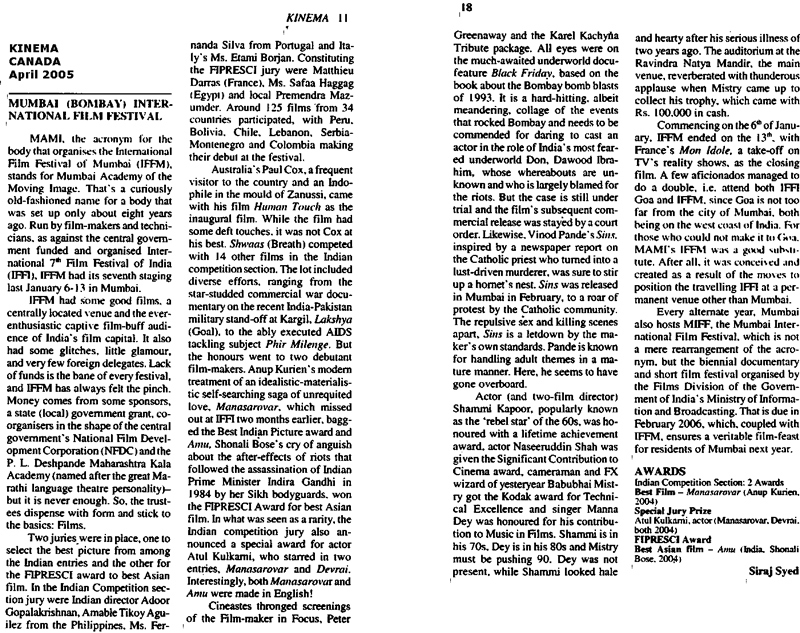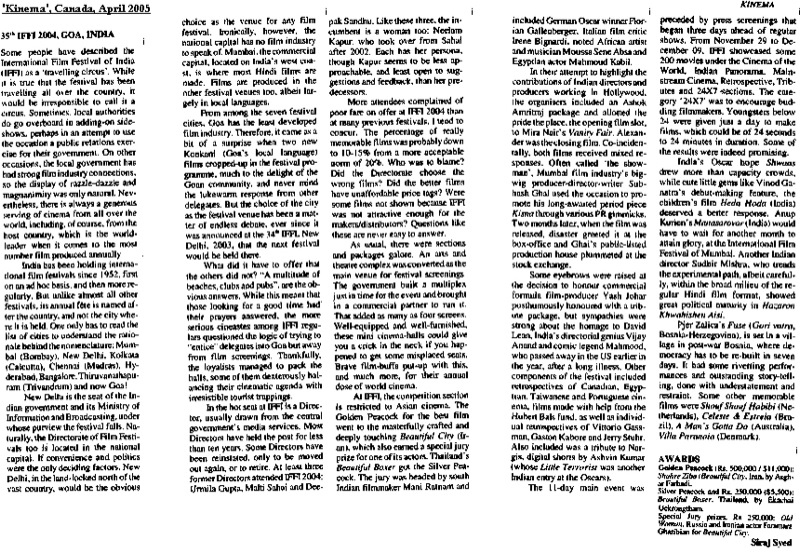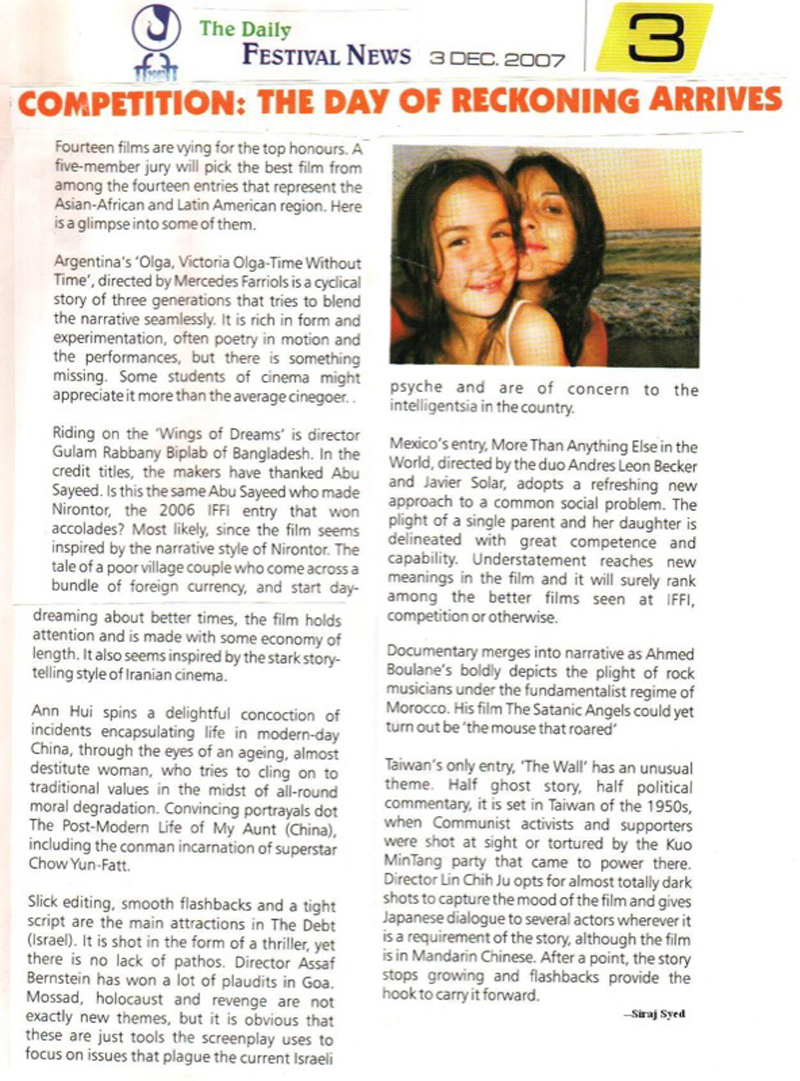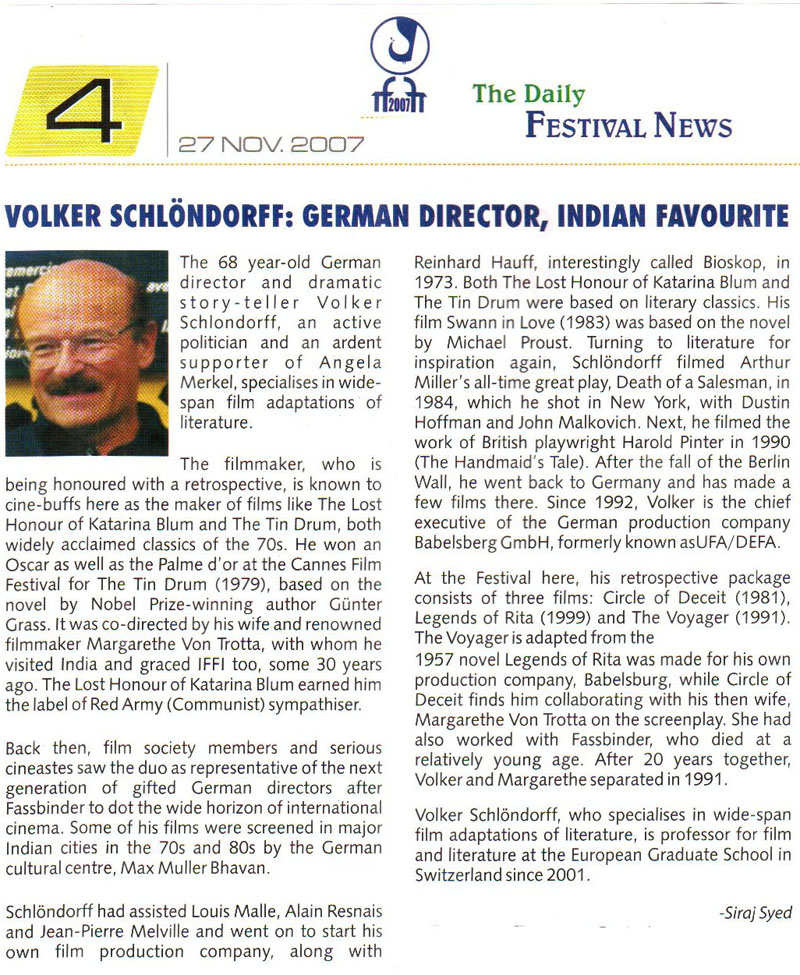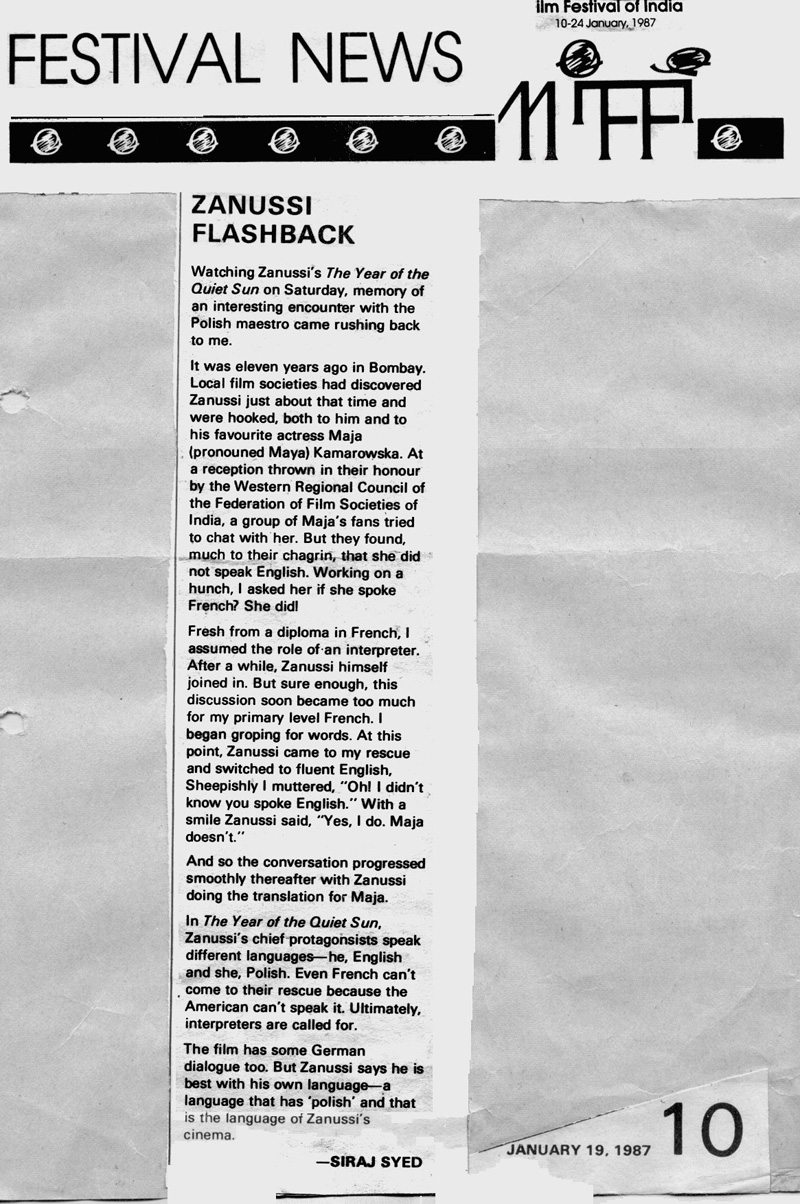|
|
||
|
Pro Tools
FILMFESTIVALS | 24/7 world wide coverageWelcome ! Enjoy the best of both worlds: Film & Festival News, exploring the best of the film festivals community. Launched in 1995, relentlessly connecting films to festivals, documenting and promoting festivals worldwide. Working on an upgrade soon. For collaboration, editorial contributions, or publicity, please send us an email here. User login |
Vijayanand, Review: All Vijay, No Anand
Vijayanand, Review: All Vijay, No Anand You might be pardoned for mistaking the film to be a bio-pic on the genius Hindi film director, Vijay Anand (Guide, Jewel Thief, Johnny Mera Naam). But that can only arise out of ignorance, for if you have read anything about the film or seen a poster or video, you will be aware that this is nothing like a Vijay Anand bio-pic. It is, in fact, a docu-drama about a family in Karnataka that started with the printing industry and the next generation went into the transport business. While the printing enterprise was moderately successful, the transport venture grew into a behemoth, thanks to the efforts of Vijay, with a little help from his son Anand. The company was named Vijayanand Roadlines, or VRL, and hence the name of the film. Made by the family, it is family viewing fare, meaning it will be appreciated by the family and friends of the businessmen in the film, but very few others. The footfalls in the cinemas showing the Hindi dubbed version that we saw are likely to be even less. In Gadag, North Karnataka (a southern Indian state), the Sankeshwar, two generations ago, family runs a printing press business. The father is devoted to it and gives it his all. But the margins are low and the going is tough. His son, Vijay, buys a semi-automatic Victoria 800 machine that will increase the efficiency10 times. But somewhere in his mind is a desire to expand into another domain, earn big money, and name and fame too. He zeroes in on the transport business and manages to procure one truck. However, he becomes the laughing stock of the transport trade because just one truck is unheard of. Almost all the other players have a fleet each. Somehow, he wins over a local bigwig in the transport trade, and he agrees to finance Vijay’s purchase of four more trucks. That begins his journey into the thick of the trade. To attract more clients, he moves his operations from the small town Gadag to relatively bigger townships of Hubli-Dharwar-Davangere, also in North Karnataka. Obviously, the local regulars do not take kindly to his arrival. Moreover, he earns the wrath of the editor of the region’s most popular newspaper, Rama Rao, over trifling incident, and the editor launches a tirade against him. In an unfortunate incident, his truck is blocked by strikers who are squatting on the highway. But when they discover that the truck belongs to Vijay, they let it pass. Taking advantage of the window, some other trucks follow VRL’s truck, one of which hits a strikers’ flag and tears it. This enrages the strikers, who presume that it was Vijay’s truck that tore their flag. The strikers go on a rampage and destroy Vijay’s godown. His luck holds, and a good Samaritan is waiting to bail out Vijay. Meanwhile, to counter the propaganda against him in the newspaper, he launches his own daily newspaper. Contesting the election, he wins a seat on the ticket of the party that is ruing India and Karnataka currently. Soon he will start bus and taxi services, and be the owner of a fleet comprising 4,300 vehicles. Director Rishika Sharma (supernatural film Trunk, 2018, behind her) has probably gone by the facts, as narrated to her by the Sankeshwar family, and added only one choreographed, unrealistic fight scene to the plot. Of course, scenes have been dramatised, to give it a narrative feel. Unfortunately, the writer(s) name (s) are not available. Except for the scene where Vijay springs a surprise by revealing that the Victoria 800 he has brought by train is not an English wife but a printing machine, there are hardly any surprises. Documentaries largely rely on interviews and research – here there is neither on display. The story is narrated from Anand’s point of view, Anand being Vijay’s son. All characters included are played by actors and in the name of research, there appears to be only the one-sided records of the Sankeshwar family. So, any objectivity is conspicuous by its absence. Meant to eulogise the three generations of the Sankeshwar family, that is exactly what the film does. Dialogues spout two-sided philosophy every three minutes, no matter who is speaking. Except for the fact that there is some alienation shown between Sankeshwar and Vijay towards the end of the film, there is not a single touch of negativity, or grey areas, in the film. Vijayanand is a good example of a home video movie, for the near and dear ones to watch and moisten their eyes. Ticket-holders are not likely to shed those tears nor are they likely to get bemused.
Nihal Rajput plays Vijay in an undistinguished manner. He uses a mannerism of running his hand through his hair, probably a real-life trait of Vijay’s. Granted that the actor need not look similar to the subject, he should not look so dissimilar either. (We are shown the real Vijay and Anand at the end). His father, Sankeshwar, is played by veteran Anant Nag (Nagarkatte) who is a class actor, turns in a decent performance, at the age of 74. He does go a bit over the top, but never hams. Bharat Bopanna as Anand has more of a voice-over role than screen presence, and when on screen, he is just smiling and walking. Another veteran, Prakash Belawadi, often seen in Hindi films, is cast as the editor, a role he previously did in Sanju (2018). Sadly, for him, he has a few scenes of natural acting and is then made to go over-the-top. Siri Prahalad as Vijay’s wife Lalitha and Archana Kottige as Anand’s wife Vani acquit themselves well. From the rest of the cast, these names could be identified: Vinaya Prasad, Anish Kuruvilla, V. Ravichandran, Ramesh Bhat, Dayal Padmanabhan, and Shine Shetty. Vijayanand has music and background music by Gopi Sundar C., cinematography by Keertan Poojary and film editing by Hemanth Kumar D. The attempt to recreate a train, both stationery and in motion, and a platform, can be seen through as a set and an attempt to convey motion by camera tricks. Released ambitiously in five languages - Kannada, Hindi, Tamil, Telugu and Malayalam – its screen language is not narrative film language, in the conventional sense of the term. And it does not work as a docu-drama either. All it flaunts is Vijay (victory) of the three generations of the Sankeshwar family, and the formation of their business empire, but fails to deliver any Anand (joy). As a result, cinegoers might want to have no truck with it. Rating: * ½ Trailer: https://www.youtube.com/watch?v=rfs0o3s4vwg 10.12.2022 | Siraj Syed's blog Cat. : Anant Nag (Nagarkatte) Anish Kuruvilla Archana Kottige Bharat Bopanna Davangere Dayal Padmanabhan Dharwar Gadag Gopi Sundar C. Hemanth Kumar D. hindi Hubli Kannada Keertan Poojary Malayalam Nihal Rajput Prakash Belawadi Ramesh Bhat Rishika Sharma shine Siri Prahalad Tamil telugu V. Ravichandran Vijay Anand Vinaya Prasad VRL
|
LinksThe Bulletin Board > The Bulletin Board Blog Following News Interview with IFTA Chairman (AFM)
Interview with Cannes Marche du Film Director
Filmfestivals.com dailies live coverage from > Live from India
Useful links for the indies: > Big files transfer
+ SUBSCRIBE to the weekly Newsletter Deals+ Special offers and discounts from filmfestivals.com Selected fun offers
> Bonus Casino
User imagesAbout Siraj Syed Syed Siraj Syed Siraj (Siraj Associates) Siraj Syed is a film-critic since 1970 and a Former President of the Freelance Film Journalists' Combine of India.He is the India Correspondent of FilmFestivals.com and a member of FIPRESCI, the international Federation of Film Critics, Munich, GermanySiraj Syed has contributed over 1,015 articles on cinema, international film festivals, conventions, exhibitions, etc., most recently, at IFFI (Goa), MIFF (Mumbai), MFF/MAMI (Mumbai) and CommunicAsia (Singapore). He often edits film festival daily bulletins.He is also an actor and a dubbing artiste. Further, he has been teaching media, acting and dubbing at over 30 institutes in India and Singapore, since 1984.View my profile Send me a message The EditorUser contributions |




















